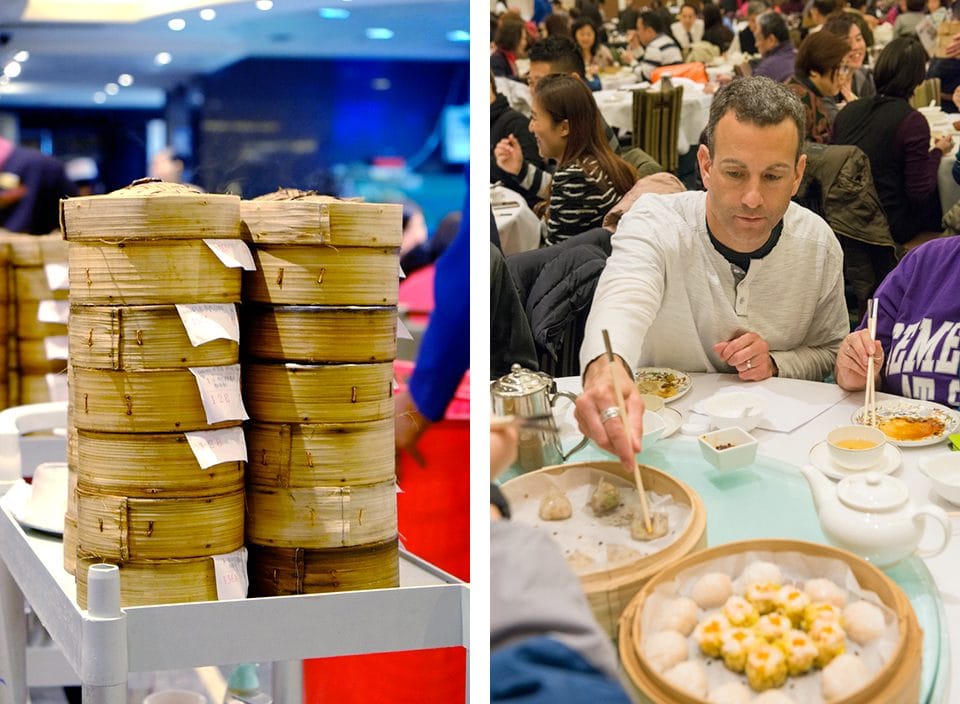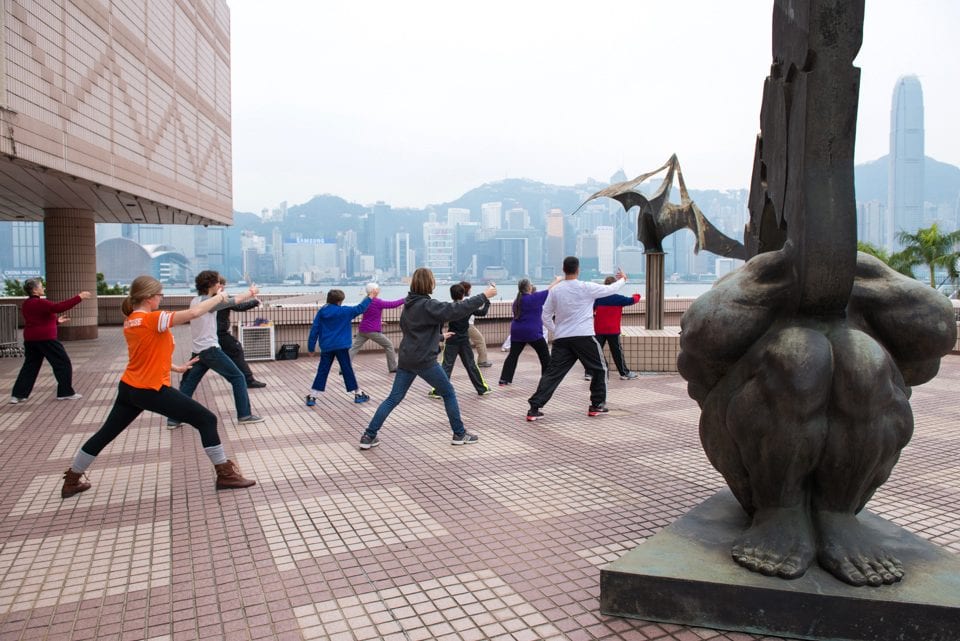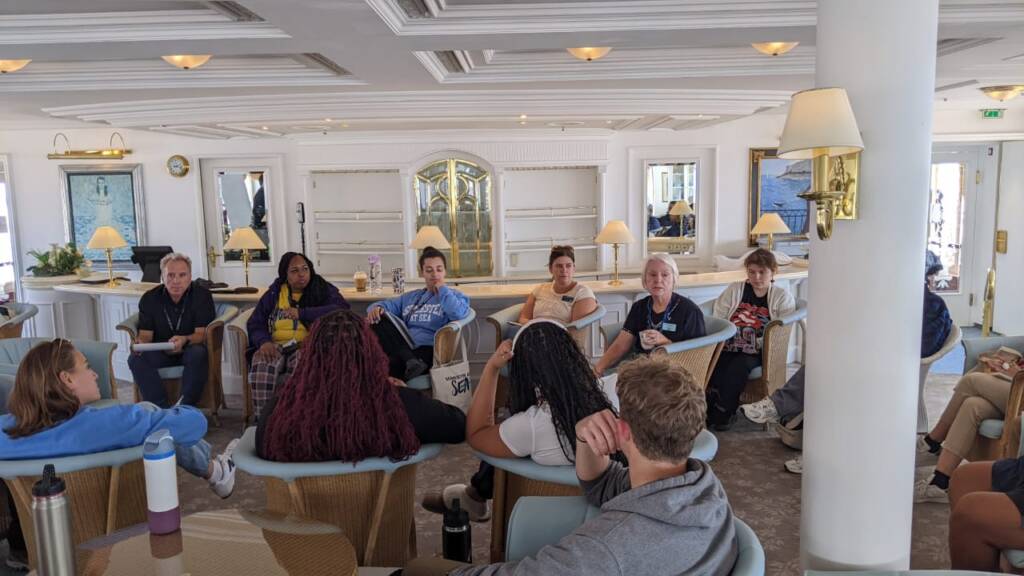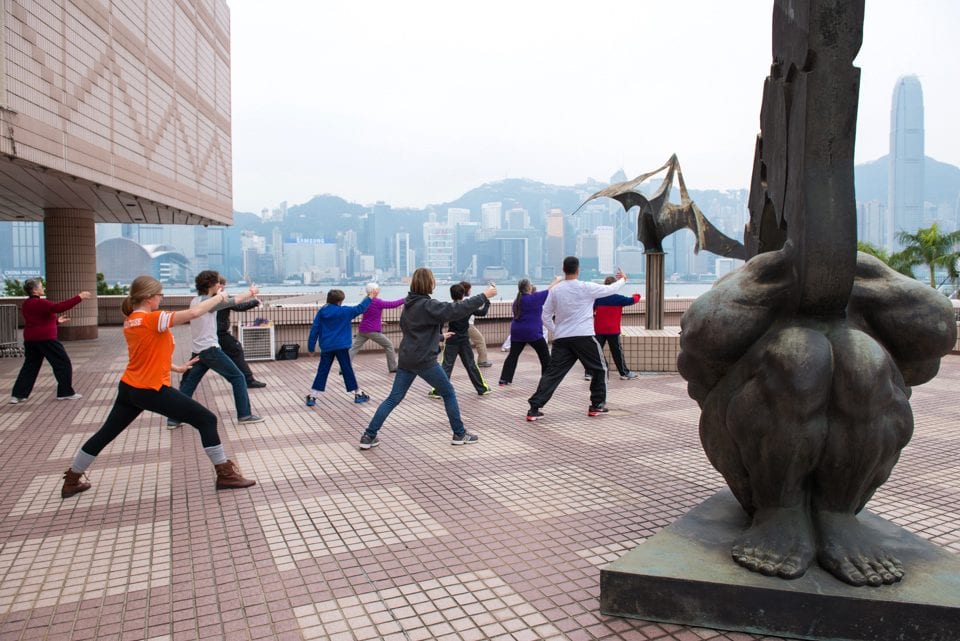
While in Hong Kong, voyagers sampled Chinese culture by learning about tai chi, tea, and dim sum.
At the Hong Kong Cultural Center set on Victoria Harbor, voyagers met William Ng, a tai chi master, for a morning lesson. Over a portable loudspeaker, Mr. Ng explained, “Tai chi is a physical exercise which integrates with Buddhism, Taoism, Confucianism, martial arts, and medical learnings.” He then led the group through a warm-up meditation and exercises before demonstrating the slow, graceful movements of tai chi. While watching Master Ng, Professor Drew Kahn was in admiration of his jin, or accumulated qi (or energy flow). In Professor Kahn’s acting classes at Buffalo State University, he teaches students tai chi as a means to become better actors. He explains, “For acting, before you get on stage you have to have that flow, that’s what we call presence.”
The movements of tai chi imitate the life and gestures of animals. The voyagers gently swept their arms like cranes flapping their wings and bent over as if picking up a needle from the sea floor. After moving through basic tai chi forms, the group traveled to another area of the city to experience the art of tea, an art the Chinese have been perfecting for hundreds of years.
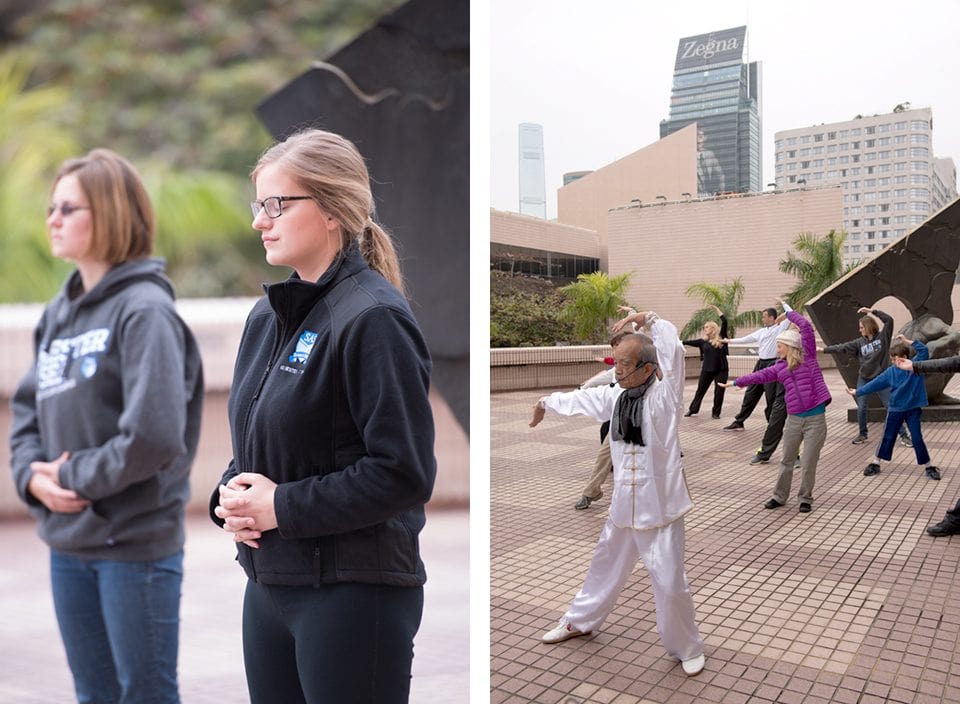
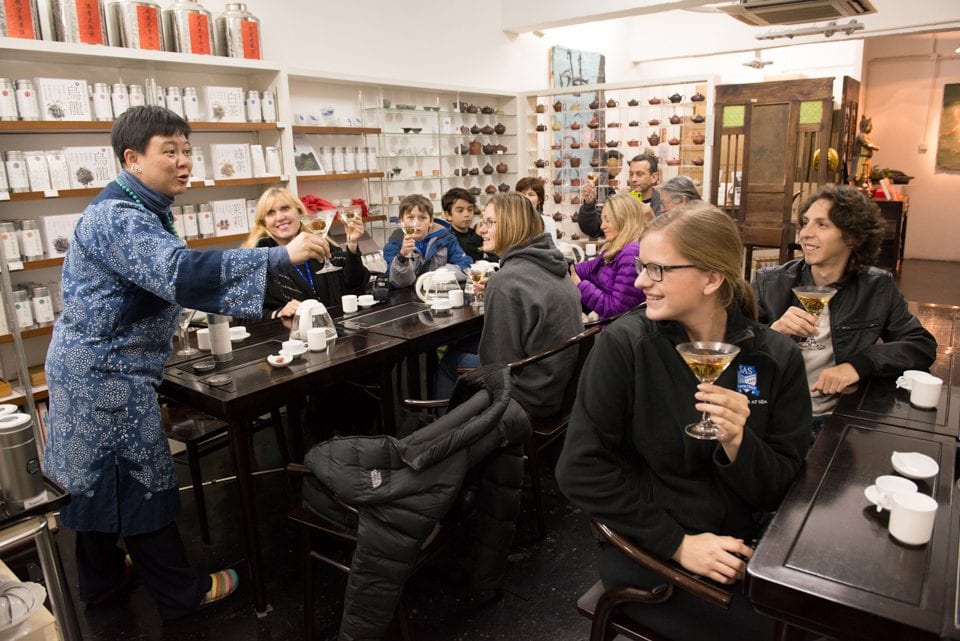
Wandering through the bowels of an industrial building and up a freight elevator doesn’t prepare one for the oasis found at Ming Cha. Inside Vivian Mak’s tea house, voyagers were warmly invited to explore tea using all of their senses. They not only sipped teas, but also nibbled on dry tea leaves, rolled leaves between fingers, and even deconstructed a jasmine blossom “ping pong” ball. This interactive tea tasting may be considered unconventional, but Ms. Mak believes learning comes best when people are allowed to explore their curiosity. She says, “Playing around and asking a lot of questions is not just for kids, but for everybody.”
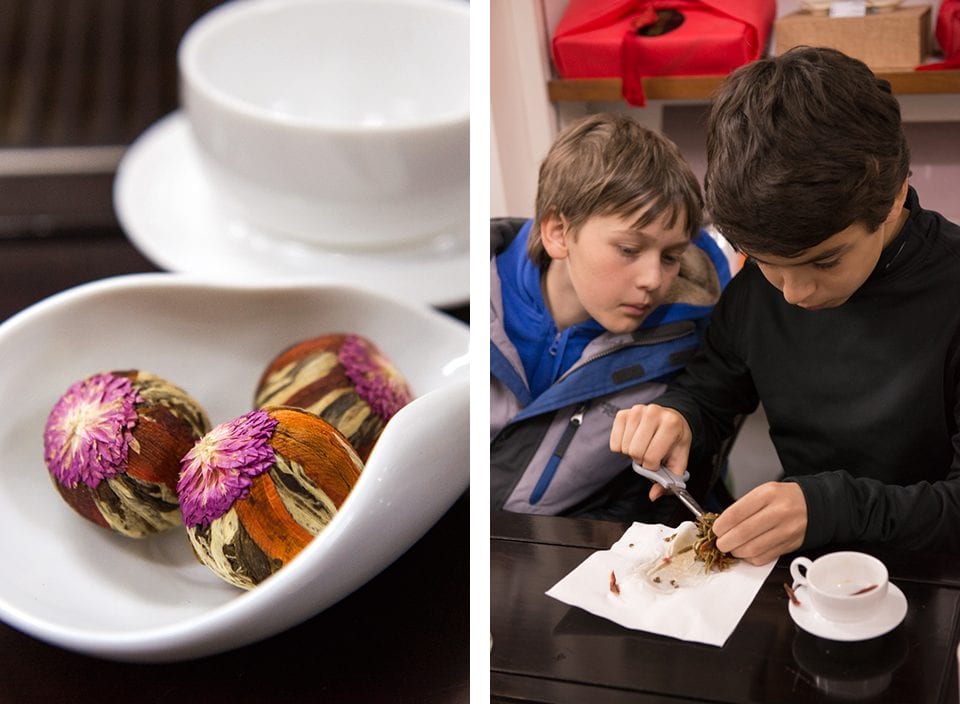
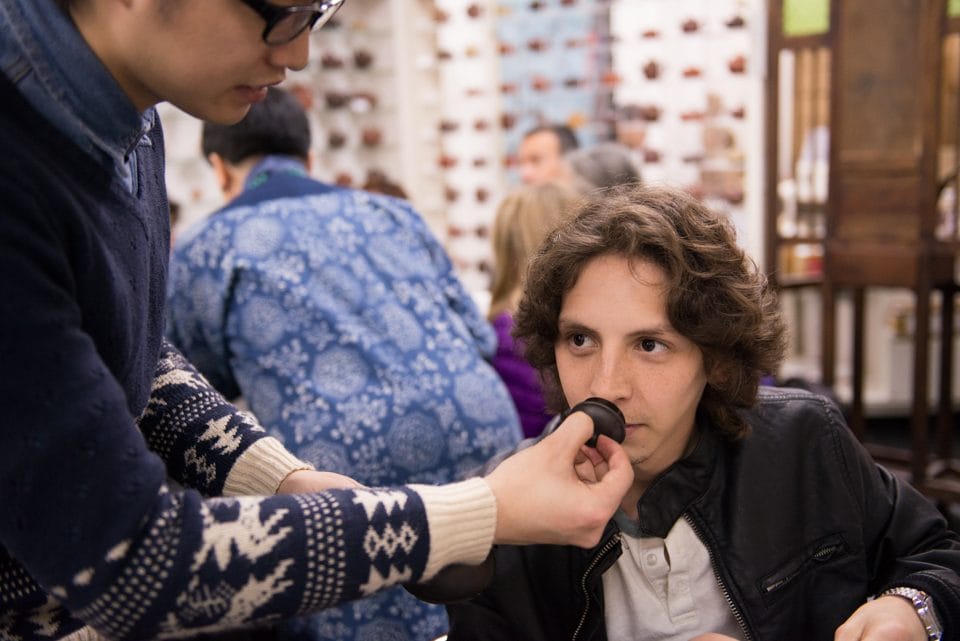
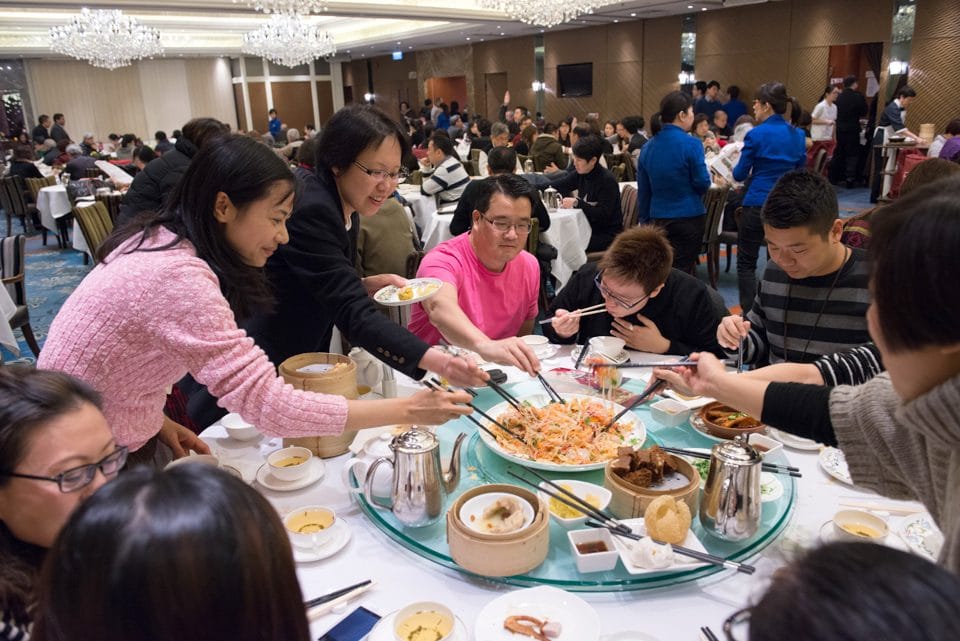
The group then traveled to the Jade Garden restaurant to dine on dim sum, a Cantonese style of food which literally means “from the heart.” Dim sum is small portions of food, ranging from dumplings to chicken feet, normally served in bamboo steamer baskets or small plates, similar to the concept of Spanish tapas. In Hong Kong, people say they are going to drink tea, or yum cha, when they are going to eat dim sum. This refers to the history of dim sum, which originated when laborers needed a bit of sustenance when they’d sit down to drink their afternoon tea. Normally dim sum is served only for breakfast or lunch at banquet hall style restaurants which are filled with large round tables to accommodate groups of friends and family. The Semester at Sea voyagers surrounded two tables and shared in a feast of small plates that spun on a turntable, allowing each person to pluck a piece of dim sum from the bamboo steamers using their chopsticks.
With mind and bellies full from a day of cultural exploration, the voyagers returned to the MV Explorer with a better sense of Chinese culture in Hong Kong. In essence, as Professor Kahn observed, “The day was a dim sum sort of day,” with small portions of culture dished up and served from the heart from welcoming hosts.
